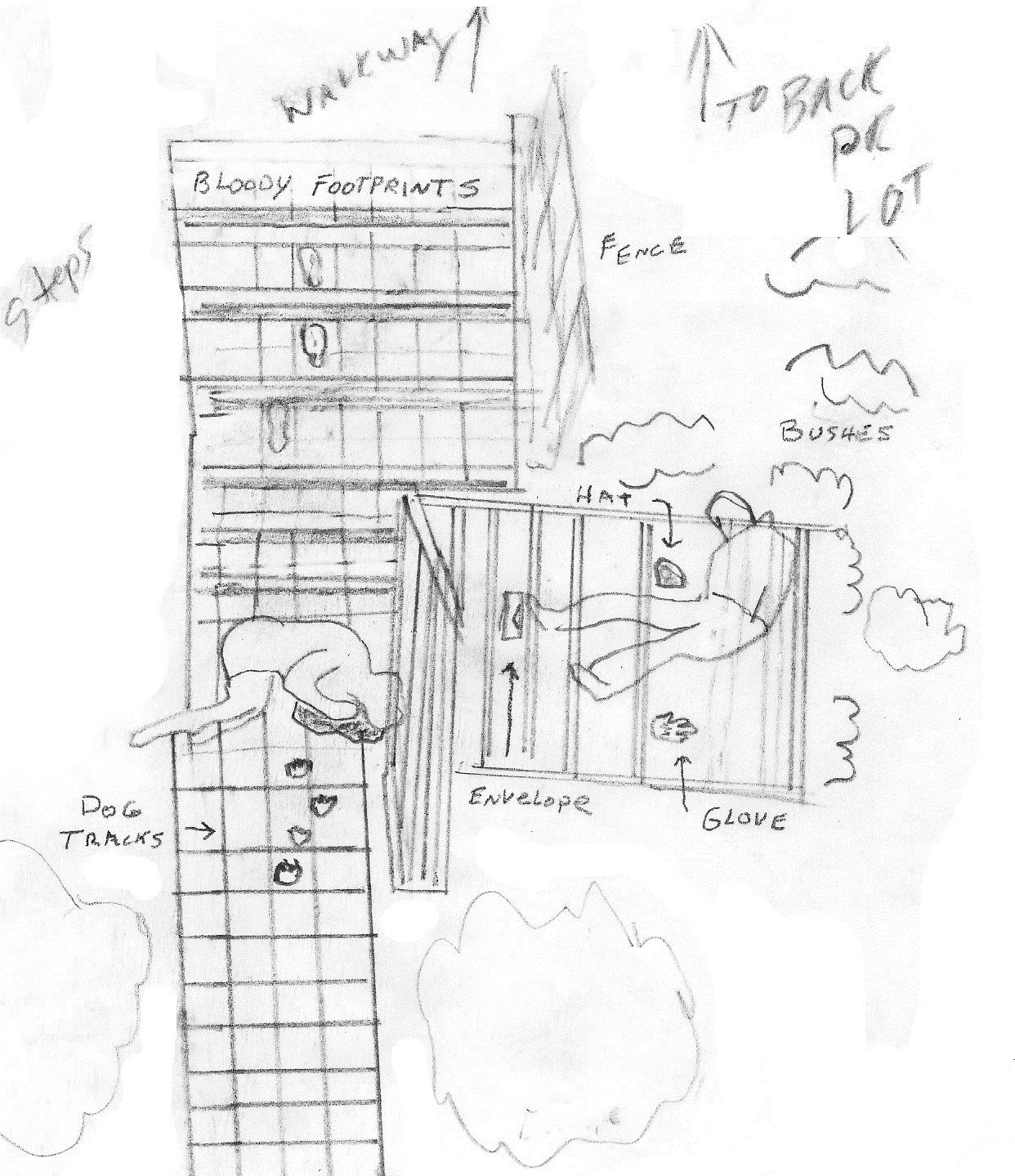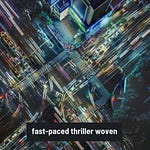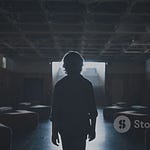Imagine a book in which YOU are the main character investigating true crime cases. You become the detective, you walk the crime scenes, you collect the evidence, and you collaborate with your detective partner to determine the guilty person.
Unlike any other true crime book, the reader is a fictional detective investigating historical and contemporary true crime cases. You are immediately immersed in a true crime case, from Lizzie Borden, to Lindbergh, to OJ, and to Scott Peterson, with the reader as the investigating detective.
Get your copy today - True Crime in Real Time
Except from a chapter
Whose Blood Was Found Where?
Roger Nichols is your partner on the number two shift in homicide. Close to ‘last check in’, you and Roger get a call to respond to an address in an upscale neighborhood on the West Side. As you roll up on the location, there is a patrol unit parked out front. You park behind it.
There is a terracotta tile walkway in between lush tropical like foliage off the sidewalk and a small grass tree lawn separated by the sidewalk off the street. The patrol officers have already placed crime scene tape around a wide palm tree right in front of the walkway and the light posts that are next to the street.
It is a cool June evening, and you and Roger greet the officer, skinny and seemingly too young to wear a uniform, and get a quick briefing. The pasty-faced officer tells you that they saw a lot of blood on the walkway, and upon opening the gate, saw two bodies, one female and one male, obviously deceased. He says, “So we backed out and secured the crime scene.” You ask if they have ID’d the victims yet. The officer had checked, and this was the residence of the ex-wife of a Hollywood actor, but didn’t know who the male victim was yet. You ask, “Has Crime Scene and the coroner been called?” The officer responds in the affirmative. You thank the officer, go under the tape, and, standing on the sidewalk viewing the scene, try to decide the best way to approach without disturbing the scene, which may be difficult considering all the blood.
You say, “Time to do the initial walkthrough.” Roger takes out his notepad, ready to record any observations and your comments. Roger is tall and thin, his dark hair combed straight back. He is always meticulously dressed in an expensive suit and colorful tie.
You and Roger approach the area near the open white gate attached to a white painted fence with perpendicular thin white spines. You carefully move forward, stepping around the blood on the walkway. You notice dog paw prints in blood on the walkway. As you get closer, you can see the body of a female lying on her left side, facing toward you, in a particularly large pool of blood near her upper body. The pooled blood has dripped down into the cracks of the terracotta tile.
You find it interesting that some people have described the smell of blood as being somewhat metallic, but you don’t smell anything other than the nearby flowers. And there is certainly a lot of blood.
You and Roger move closer to the body and see she is wearing a black dress with an open back. She is lying perpendicular to you on the walkway. Her left arm is underneath her body with her hand protruding out near her waist. Her right arm is clutching her torso with her hand near her face. Her face and head have numerous wounds.
You bend down close to her body and notice a number of deep wounds on her neck and scalp done by a sharp tool. Further visual examination of her neck shows a deep wound exposing internal flesh. On her bare back, you notice a foot impression and bruising. She is at the bottom of a set of four steps that lead to the back side of the residence. There is a railing along the steps that match the gate and enclosure.
Your eyes move to the right of the female, and you see the body of a young man. He is in a partial sitting position, leaning over to his right on the tile, and resting slightly up against the fence/enclosure. He looks young, perhaps in his twenties, with short dark hair. It appears as if his light-colored shirt is pulled up, exposing his torso and entangling his arms. He is wearing blue jeans that are soaked in blood, especially on the left leg, and blood- spattered white socks and sneakers.
You squat down and get close to the male victim. He has a deep wound to his neck, penetrating wounds to his chest, and a puncture wound to his left thigh through the jeans. You move closer to his bloody shirt and take a small magnifying glass out of your pocket.
Roger chuckles and says, “You still got that magnifying glass?”
You respond, “Yes, and I don’t like the Sherlock stuff.” You then state, “Besides, there’re a couple of hairs stuck in the blood on his shirt.”
While close to the male victim, you notice a blue knit cap, much like someone in the Navy might wear on the ground. You move closer and inspect it with your magnifying glass. “Yeah, you know, I see a number of things on this cap. A bunch of hair. A couple of fibers the color of the male victim’s shirt, and a couple of other colored fibers.”
You rise, and you and Roger stand together analyzing the scene, taking it in for a couple of minutes. You enumerate distinct types of blood spatter, pointing them out as you go. “There is a lot of cast-off blood spatter and spurting blood spatter. I also see some passive blood drops. They’re small, round in shape, and do not have the characteristic long tails of cast-off blood. Nor are there large round pools of blood. This usually comes from a wound that is dripping directly down, and sometimes it is from a cut on the attacker.” You don’t have to say it, but you know the reason a perpetrator would be cut is that when a knife hits bone, it stops abruptly, it can cause the knife holder to slip their hand down to the blade and cut themselves. You and Roger agree that you should point that out to the crime scene tech to collect.
You both continue to survey the scene, Roger scribbling in his notebook. You notice a large white envelope on the ground between the bodies. You carefully squat down and use a pen to slightly open the envelope and see that there is a pair of eyeglasses inside. While in that position, you lift away some leaves from an agapanthus plant and notice a black, blood-stained glove. You move your head very close to the glove. You notice that it is for the left hand and see a tag on the inside of the glove. You read it aloud, “Oris, XL.,” and add, “expensive. The inside of this glove looks like cashmere, just like the fiber on the cap, but you don’t know what the other fiber on the cap could be.”
You rise, carefully standing without moving, and further assess the scene. Roger asks, “What do you think so far?”
You respond, “Incredible rage in these attacks. Appears as if the woman was answering the door and was attacked, and this young man came to her aid and was also set upon with a long-bladed knife. They also appear to have had their throats sliced in a commando-type act. The perpetrator was cut when the glove was yanked from his left hand, and that accounts for the round drops of blood.”
Roger makes some more notes and then draws a sketch of the scene.
You and Roger step over the woman’s body onto the steps leading to the side of the residence. On the tile that runs along the side of the residence, there are more of the small blood drops and a line of shoeprints in blood. Standing upon the upper landing, you take out a cloth measuring tape and measure one of the shoeprints. You declare it to be “twelve inches, a size twelve. And an unusual shoe type,
tile that, on first glance, appears to be the partial heel of a shoeprint. You kneel down and get a closer look. Roger asks you what you think about the possible shoeprint. You respond, “This is not a shoeprint. It is a mere disruption in the tile. I don’t even need my glass. And anticipating any future analysis of this disruption, if any expert says it is a shoeprint they should be dismissed and never allowed to testify again.”
“That sounds a lot like… ‘you know who’ talking.
Sherl…”
“What was that?”
“Nothing,” Roger says. “Not a thing.”










